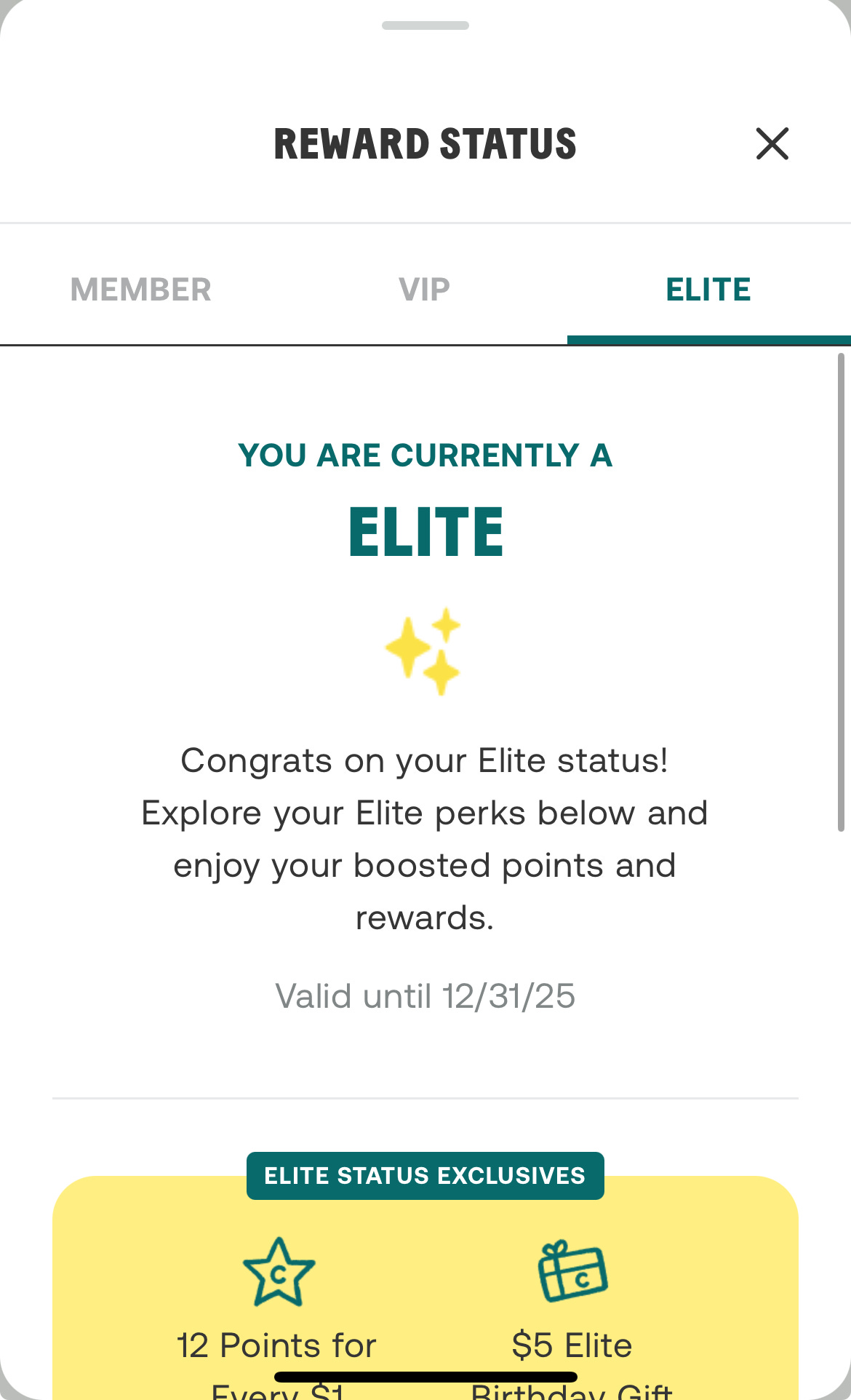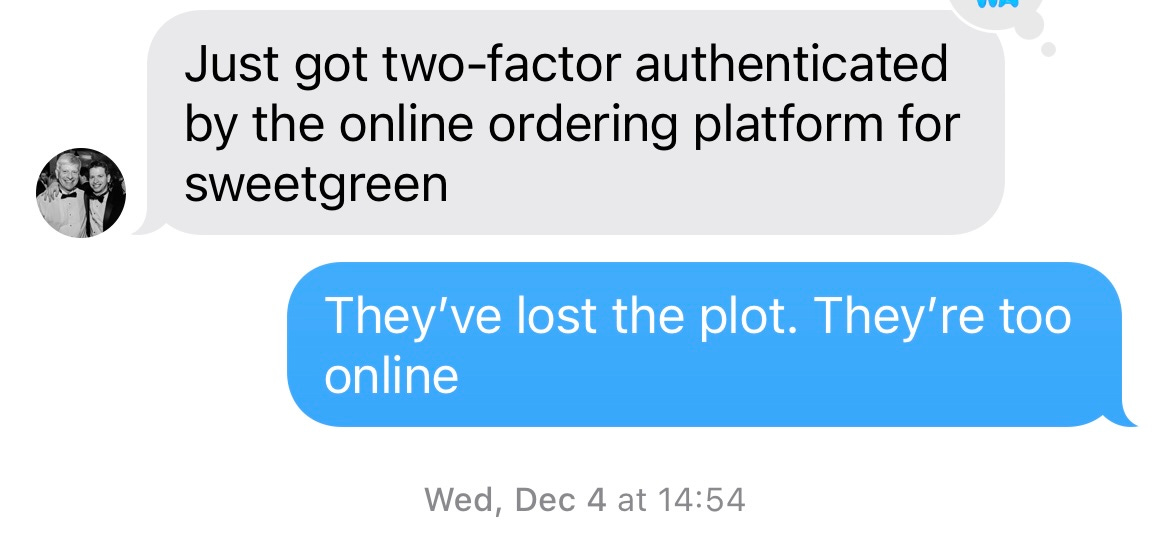One of my coworkers worked at Lehman Brothers when it failed during the financial crisis. Once, at a holiday party, I asked her to tell me about what it was like to be on the frontlines of such an important chapter in American financial history. She put down her scotch and told me about walking out of the office in midtown Manhattan for lunch in September 2008, and being accosted by reporters asking questions about the bank’s solvency. “I was an analyst!” She told me. “I didn’t know anything — I was just going to get a slice of pizza for lunch! That tells you how long ago it was: can you imagine eating pizza for lunch now?”
If you’re interested in Lehman’s collapse, you should watch Margin Call or read Too Big to Fail1 (apparently Sorkin is coming out with a sequel, which I’m looking forward to). In this article, I’m going to focus on a different part of that story — the lunch part.
Has Sweetgreen Lost the Plot?
Sweetgreen and Chopt are both a 2 minute walk from my office. They are both optimized for digital orders and I’ve fallen into the habit of ordering a salad through an app almost every day I’m in the office, walking down to pick it up from an alphabetized shelf.
I cannot hope to describe the inherent sadness of this better than Jia Tolentino2 did in 2019:
The ideal chopped-salad customer needs to eat his $12 salad in 10 minutes because he needs the extra time to keep functioning within the job that allows him to afford a regular $12 salad in the first place. He feels a physical need for this $12 salad, as it’s the most reliable and convenient way to build up a vitamin barrier against the general malfunction that comes with his salad-requiring-and-enabling job.
My only two exceptions to this are that
I don’t actually need the extra 10 minutes, but if I eat anything heavier than a salad I’ll fall asleep in the afternoon
The salads cost $16 now.
Anyway, in this newsletter’s tradition of examining venture-backed hospitality concepts with minimalist millennial branding, I thought it would be interesting to examine my relationship with these two salad chains, and try to understand if it was reflective of a bigger pattern.
A few months ago I requested my personal data from Chopt and Sweetgreen. This is my monthly spend at both chains over the past 2 years:
What happened to Sweetgreen?
The discerning readers among you will notice that I stopped going to Sweetgreen in Q2 of last year and shifted my embarrassingly large lunch budget to Chopt. It feels like the lifetime value of a habitual customer to one of these places is high enough that I should have had a customer success rep from Sweetgreen in my inbox, offering me Knicks tickets and asking how they could make it right3, but I received no such communications.
When I started at this job, lots of my coworkers would go to Sweetgreen, and I had the perception that it was upscale, healthy, and convenient — a tech company, that happened to make salads! So, because I like fitting in, I began ordering my lunch from the app and walking down with my coworkers to pick it up.
It makes sense that Sweetgreen was the default lunch option — it’s busier than Chopt in New York. I aggregated the reviews from 40 Sweetgreen and Chopt locations in New York City, and you can see how many reviews each location got per year:

We can tell a few things from seeing the reviews for both chains over time:
Sweetgreen locations get ~3x the number of reviews of Chopt locations; if this is a proxy for traffic it seems about right. Sweetgreen is a bigger brand in New York; it has 3.5x the instagram followers and tends to be more crowded.
This is largely a pandemic story. I didn’t live in New York in 2019, but what a time it must have been to go to a Sweetgreen in midtown…popping out of your job slinging SaaS in the Salesforce tower, Pod Save America in your first-gen airpods, quads pleasantly sore from that morning’s Soul Cycle session…the ZIRP era dream.
The volume for both chains fell off a cliff in 2020, and has been quite slow to recover. Even in 2024, it’s interesting to see that the locations with the most reviews are not in business districts like they were prior to the pandemic.
At first, my Sweetgreen habit was nice. I’d eat my salad outside when it was nice out and I felt like I was doing something Andrew Huberman would approve of. After a while, though, I realized I was spending a lot of money at this place (perhaps more than any other single company?) and I never really got any rewards. Sometimes I’d get a free Spindrift, or something, but they have those in my office and so the gesture was meaningless to me.
More importantly, once or or twice per month I would schedule an order for 12pm and the small space would be jammed with irritated people wearing headphones and milling around, shaking their heads because the online orders were delayed by 30 or 40 minutes.
This, of course, defeated the purpose of the optimization of ordering a salad on an app in the first place, and got very tiresome.
This has been a broader trend. Looking at the ratings over time, Sweetgreen has clearly struggled since the pandemic, with the average rating for these NYC locations dropping from 4.1 in 2019 to 3.2 in 2024. Of course, in that time, it’s also gone public and scaled rapidly, from 100 restaurants in 2019 to 240 of them today. In this way SG has been a victim of its own success, getting overwhelmed with orders that it can’t process on time, growing faster than it can scale its operations.
Chopt seems like it’s fared better; I wonder how much of that is because they don’t have to deal with as much volume and can provide better service:

You can see the issues I saw with Sweetgreen’s operations show up in what people talk about in reviews. Compared to Chopt, Sweetgreen gets low ratings in reviews that mention “service,” “line,” or “online”:
Since their pre-pandemic heyday, it seems like the Sweetgreen customer experience has strayed from the brand’s core competency — being “healthy” and “fresh” — and has moved towards people being frustrated with inconsistent service and product.
One a personal level, all of this led to me to take drastic action in my daily lunch operations:
First, I started ordering my salads for 11:30am, leaving a buffer between the scheduled time and when I walked down to pick it up. Unfortunately it seems like a lot of other people had the mental acuity to come up with this strategy and it eventually failed.
At that point, I had no choice but to be ~brusque~ with Sweetgreen’s automated customer support:
That was somewhat cathartic but didn’t fix the underlying issues in our relationship. So at some point last April, I furtively downloaded another app, and began a dalliance with Chopt instead. Each day I walked by the Sweetgreen I’d been in a hundred times, and I felt nothing.
I didn’t really have a perception of Chopt before trying it. I figured they probably chopped a lot of their ingredients, which seemed fine to me. They seem to do a lot less volume than Sweetgreen, but that means I have never had to wait for my order. To my knowledge, they don’t sell $120 branded sweatshirts, and their loyalty program treats me with the respect that I so richly deserve:

What began as a fling, a toxic attempt to get Sweetgreen to fight to win me back, has become my new normal. The pickup process is much smoother, and the employees are energetic and kind. The salads are, frankly, just fine — but they’re reliably fine, and I’ve never had to text Chopt wondering if they’ll show up for me. Chopt has become my rock.
It seems like Sweetgreen in New York has struggled in the same way Starbucks has. They both fit these criteria:
Loyal brand with a large customer base
Increasing percentage of revenue from digital orders
Pandemic makes hiring & retaining employees harder
Restaurants are not prepared to handle the volume and especially to deal with the influx of digital orders alongside in-person orders
The customer experience declines & the brand suffers
I don’t really know how to fix this, it’s a hard problem. Sweetgreen’s stock has performed poorly over this time period4, and it’s tough to think of examples of restaurants that have maintained quality as they grew quickly, especially with the added factors of the pandemic & growth of digital orders.
Danny Meyer wrote a book on this and it seems like his Shake Shack is doing a bit better; I wonder what he would suggest Sweetgreen do. For now, I’ve got an order at Chopt to pick up.
Thanks for reading! Would love to hear your thoughts on this, especially if you know hospitality well.
In other news, I’m really enjoying listening to Tiny Experiments, a new book by
(free on Spotify premium!). It’s a helpful reminder to me that I can shift anxiety to curiosity when I am doing something new & it makes everything seem less daunting.When I was 22 I went up to Jamie Dimon after a speech he gave and told him I had just read Too Big to Fail, and I “loved what he did during the financial crisis.” He looked at me for a moment, and said “yeah…most of that was true” and turned away.
Jia Tolentino’s book Trick Mirror is really good and also is on the mt. rushmore of “books for 26 year old straight guys to have prominently displayed in their apartments”
This is in jest, but it is somewhat interesting — if habitual customers spend $2k/year, that seems valuable enough for the business model to look different than it does now. Could salad places do direct sales?
None of this is financial advice — I’m just some guy










What ever happened to buying lettuce (even the fancy stuff, ie arugula), veg (pick yr poison), maybe some cheese, at the—ahem—grocery store, putting it in a bag/old yogurt container/Tupperware each morning and taking it to work? Honestly I skipped past the rest after seeing that someone spent $300/month $16 EACH?!) on daily salad. I can’t even…
I love how you use the graphs to give your writing a compelling structure that makes it easy to follow.
My experience with Sweetgreen was initially excitement (healthy fast food!), dampened by the reality that I had just paid $18 for a salad I could probably make at home in 10-15 minutes. It's like getting food at the airport; it always seems like a good idea, until you are eating and realized it wasn't worth it.